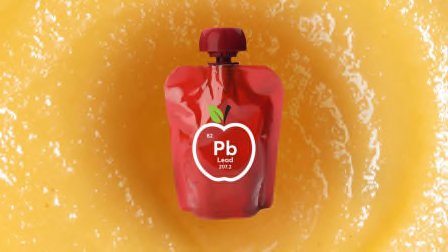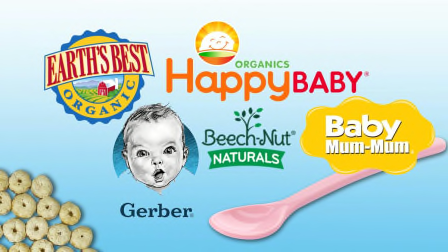When the FDA said in early March that it would issue a plan to address the problem of heavy metals in baby food, consumer advocacy groups were hopeful that it would be specific, detailed, and aggressive.
The plan the agency released Thursday makes some progress, some of those groups said, but falls short of what’s really needed to protect children from the harmful effects of these toxic metals, such as IQ and behavior problems.
Under the plan, the FDA will evaluate the scientific basis for setting limits on levels of heavy metals permitted in baby foods—starting with lead and followed by arsenic, then other heavy metals—and propose limits based on those reviews.
But according to the FDA’s timeline, the limits won’t be set for several years. For example, the FDA says a limit for lead will be proposed by April 2022, and finalized sometime between 2022 and 2024. It doesn’t plan to propose a limit for arsenic until at least 2022. Suggested limits for cadmium and mercury won’t be issued until at least 2024.
In March, congressional representatives introduced a bill that would not only require the FDA to set limits, but also proposes aggressive, stepwise targets for the amount of heavy metals permitted in baby foods, with final levels likely requiring these metals to be undetectable.
Brian Ronholm, director of food policy at Consumer Reports, says the significance of the agency’s actions can’t be measured until the levels are actually established. “Congress should not wait for the FDA to act, and should move forward with legislation to establish strict levels for contaminants in baby food,” he says.
In a news release announcing the new plan, which the agency is calling Closer to Zero, the FDA said: “We recognize that Americans want zero toxic elements in foods eaten by their babies and young children. In reality, because these elements occur in our air, water, and soil, there are limits to how low these levels can be.” In addition, the agency cited concerns that setting limits too low could mean “significant reductions in the availability of nutritious, affordable foods that many families rely on for their children.”
It also said that its own testing shows that “children are not at an immediate health risk from exposure to toxic elements at the levels found in foods.”
But some experts say that while parents shouldn’t panic, delaying action on a problem that advocates have warned about for years continues to expose kids to heavy metals unnecessarily.
“The agency needs to move more aggressively to protect children,” Ronholm says. “The risk is real, and we know it’s feasible to get to lower levels. Our testing shows some baby food companies are already there.”
In CR’s 2018 tests of 50 popular baby and toddler foods, the amounts of heavy metals were below our level of concern in about a third of the products. In some of the products, amounts of some metals were not measurable. Testing by other consumer groups have also found that while heavy metals are common in baby foods, some have much higher levels than others, and at least some foods have very low levels.
Baby food manufacturers Beech-Nut and Gerber did not immediately respond to CR’s request for comment on the FDA’s plan.
Experts say that regardless of when the FDA takes action, there is much that parents can do now to keep their children’s exposure to heavy metals from food to a minimum. One place to start is limiting the amount of rice-based foods and fruit juice in their diets. CR’s tests have found that these products tended to have higher levels of heavy metals. (See CR’s advice for parents for more tips.)





















